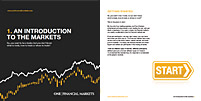

US recession risk easing, 'confident' Fed will cut by 25bps in Sept: Goldman Sachs
Goldman Sachs economists have revised their 12-month U.S. recession probability down from 25% to 20%, citing recent economic data that shows no signs of a downturn.
Following the July jobs report that triggered the “Sahm rule,” the Wall Street giant raised its recession estimates from 15% to 25%.
The increase was positioned midway between the long-term average recession probability of 15%—based on the historical occurrence of a recession every seven years—and the 35% estimate during the bank turmoil in early 2023.
However, recent economic indicators have prompted a reassessment.
Specifically, the nonmanufacturing ISM index for July rebounded, with its employment component entering expansion territory for the first time since November 2023, economists noted.
Moreover, retail sales for July beat expectations, suggesting strong real consumption growth. Also, initial jobless claims have declined over the past two weeks, aligning with the idea that the previous increase was partly due to weather and residual seasonality effects. The Financial Conditions Index (FCI) has also eased since the payroll report.
"When recession strikes, it usually strikes quickly,” economists explained.
“This means that the reassuring news on economic activity, layoffs, and financial conditions deserves some weight in assessing whether the July jobs report was an indication that recession is starting or just one weak print."
They further observe that if the U.S. continues on its current growth trajectory, it could start to resemble other G10 economies where the Sahm rule has been less predictive, holding true in less than 70% of cases. Several smaller economies, such as Canada, Sweden, Norway, and New Zealand, have seen significant unemployment increases without slipping into recession.
Looking ahead, Goldman Sachs economists indicate that if the August jobs report, set to be released on September 6, shows positive signs, they may lower their recession probability back to 15%.
On the monetary policy front, economists are more confident in their forecast of a 25-basis-point rate cut at the September 17-18 FOMC meeting. However, they do not rule out the possibility of a 50-basis-point cut if the jobs report disappoints again, given that "with inflation very benign and the labor market fully rebalanced, it has become increasingly obvious that a 5.25%-5.5% policy rate—now the highest across the G10—is excessive."
Still, the economists point out that the current level of the federal funds rate is less significant for financial conditions than the medium-term path priced into financial markets. They suggest that the Federal Reserve could achieve similar accommodation by signaling a series of smaller 25-basis-point cuts as by delivering a larger 50-basis-point cut.
Begin trading today! Create an account by completing our form
Privacy Notice
At One Financial Markets we are committed to safeguarding your privacy.
Please see our Privacy Policy for details about what information is collected from you and why it is collected. We do not sell your information or use it other than as described in the Policy.
Please note that it is in our legitimate business interest to send you certain marketing emails from time to time. However, if you would prefer not to receive these you can opt-out by ticking the box below.
Alternatively, you can use the unsubscribe link at the bottom of the Demo account confirmation email or any subsequent emails we send.
By completing the form and downloading the platform you agree with the use of your personal information as detailed in the Policy.






